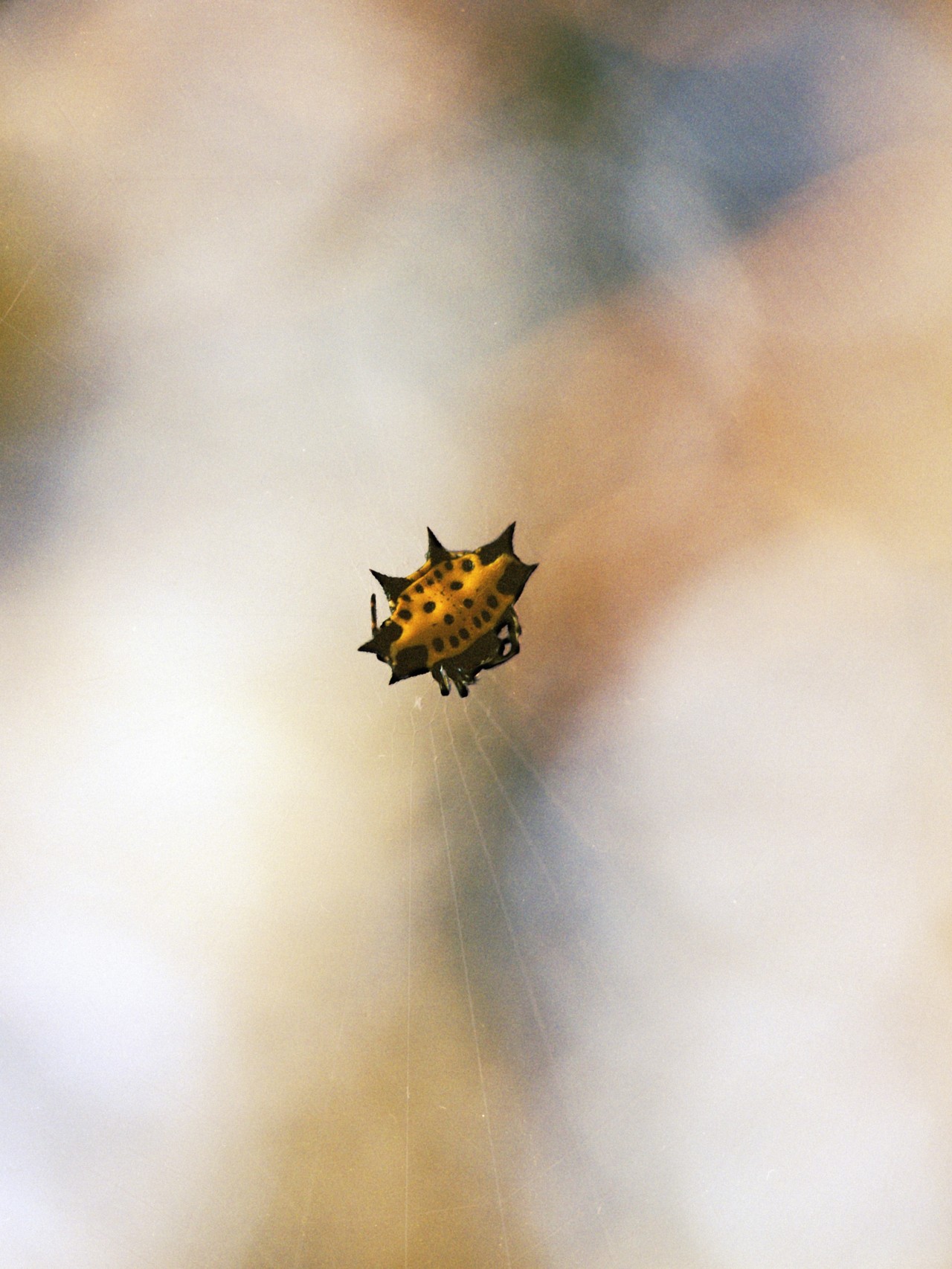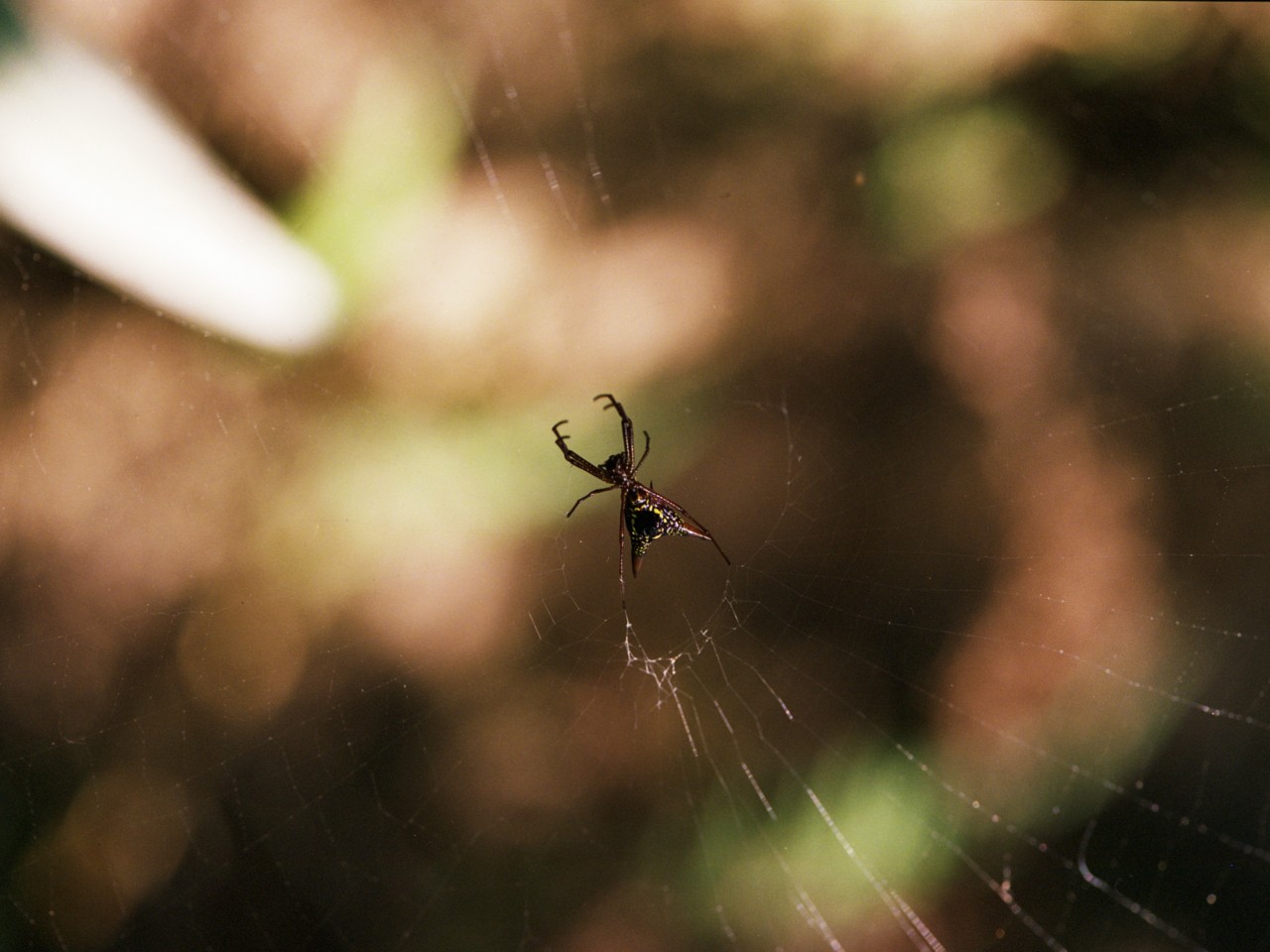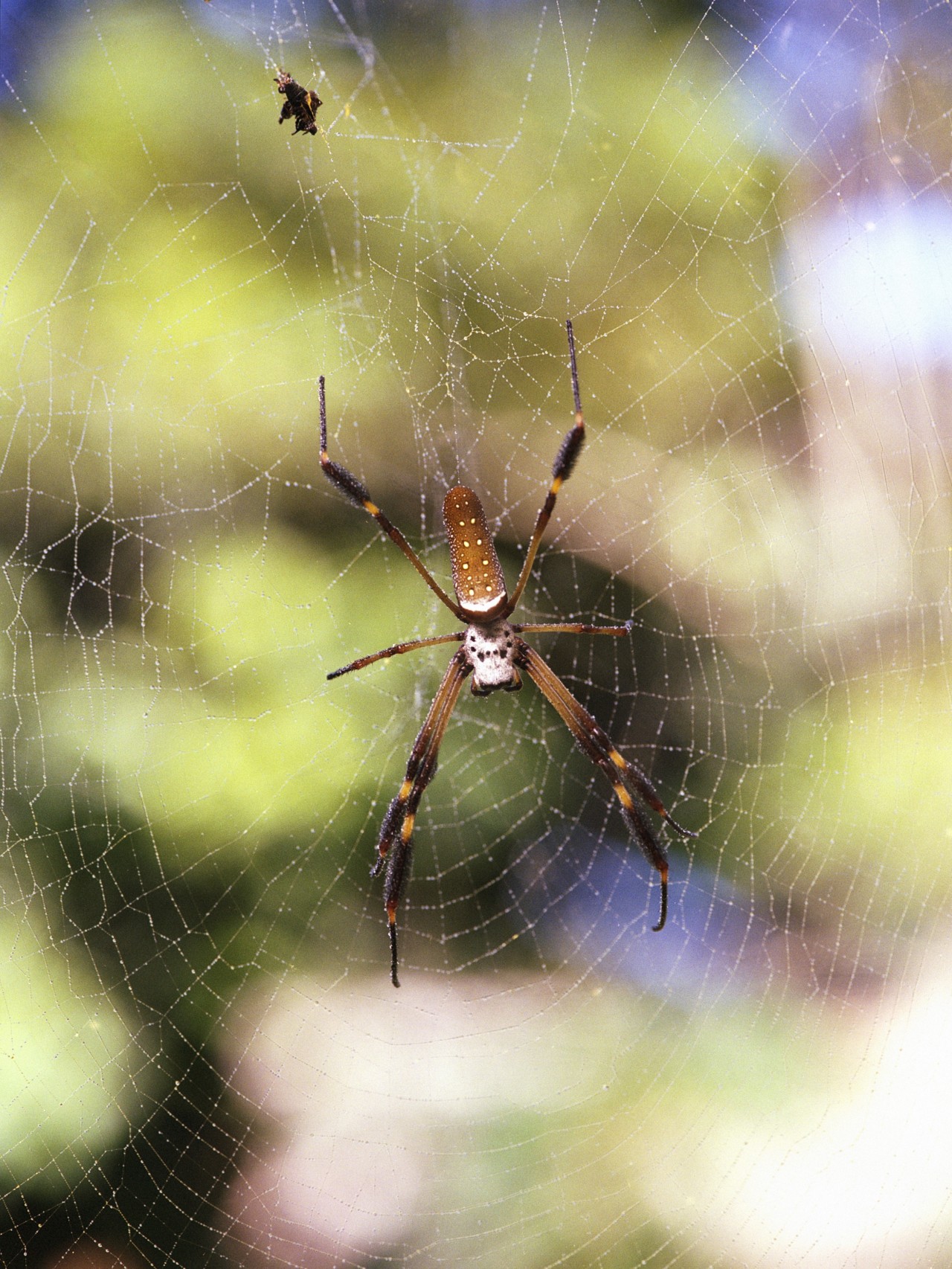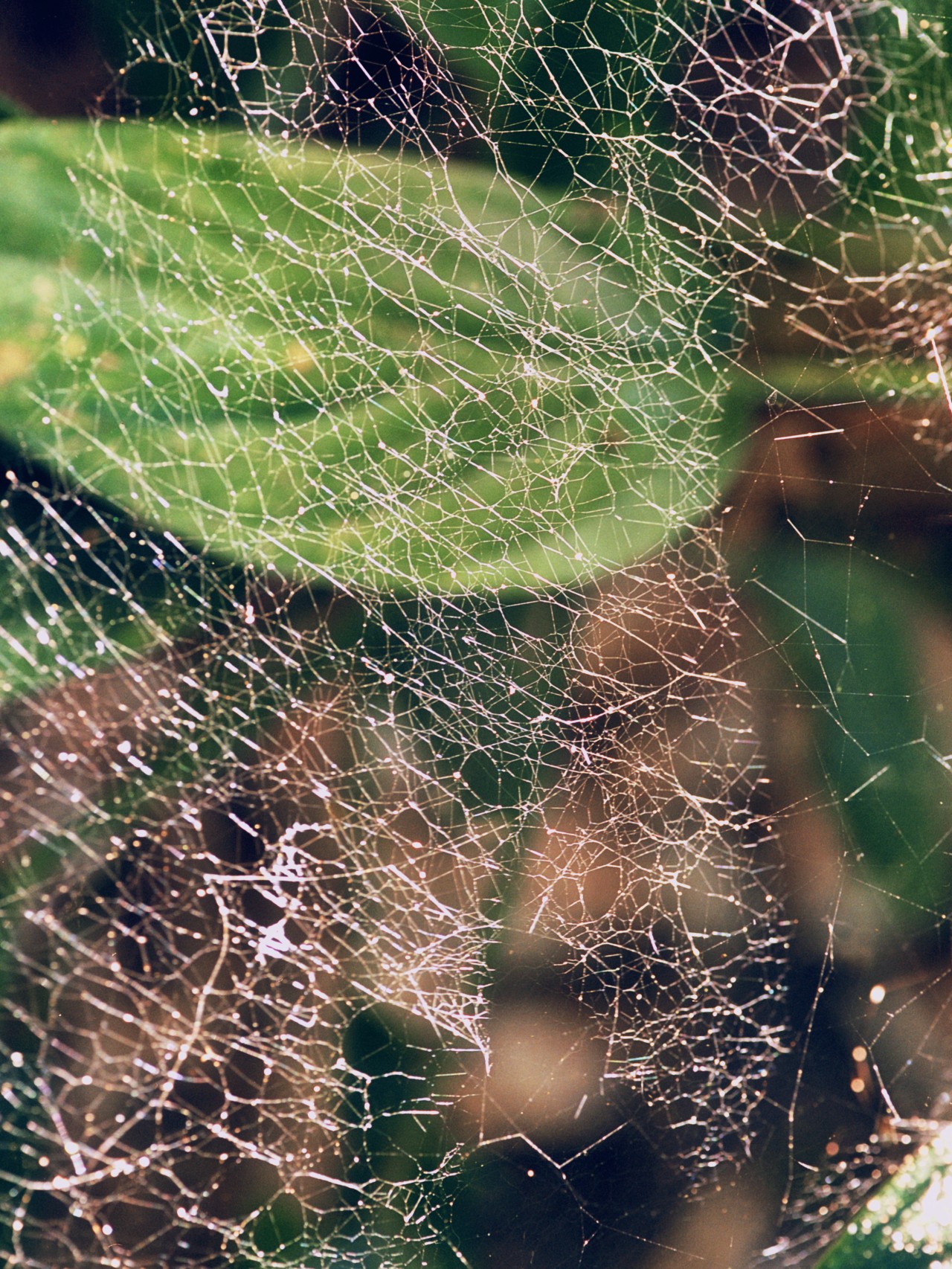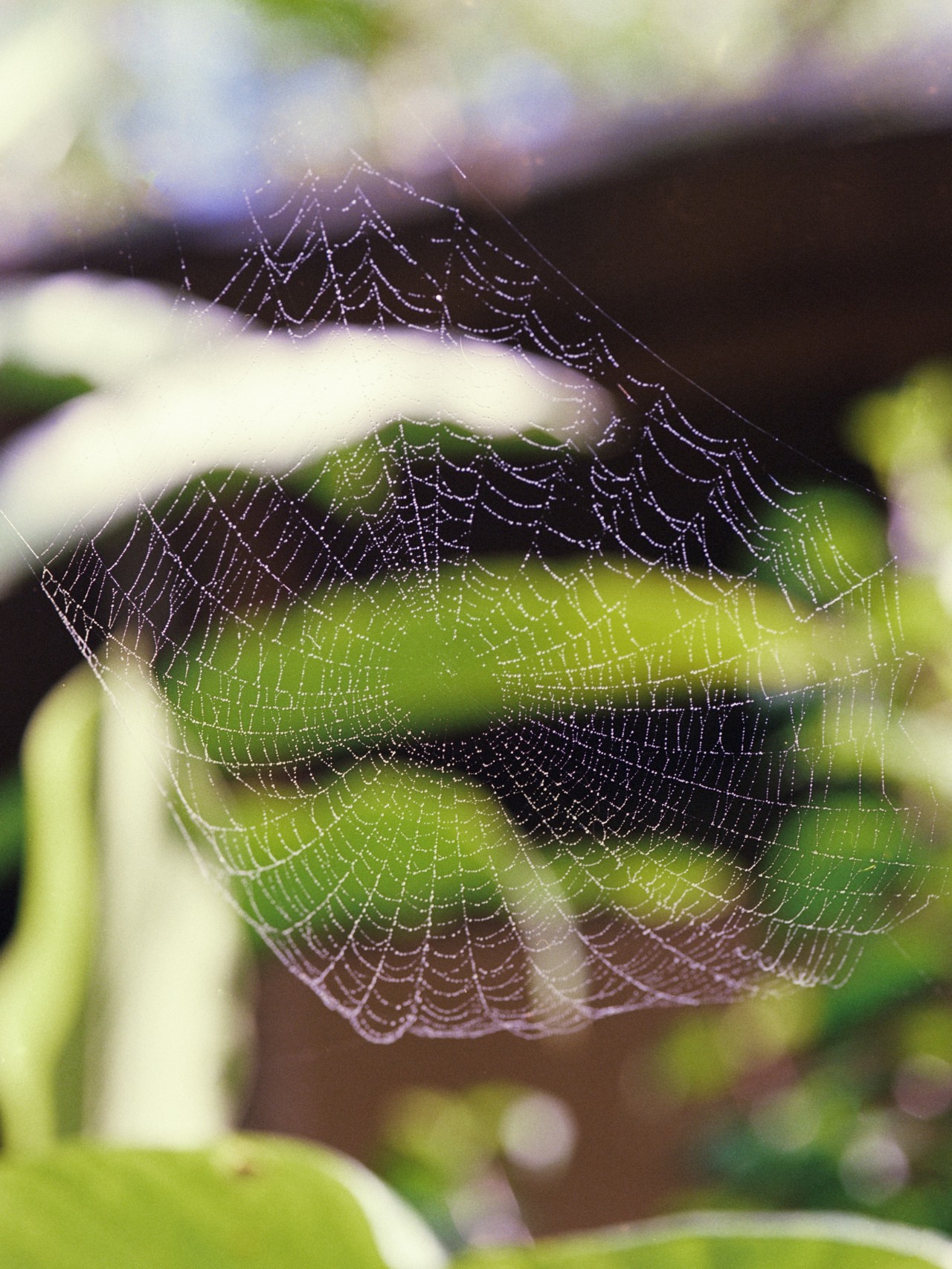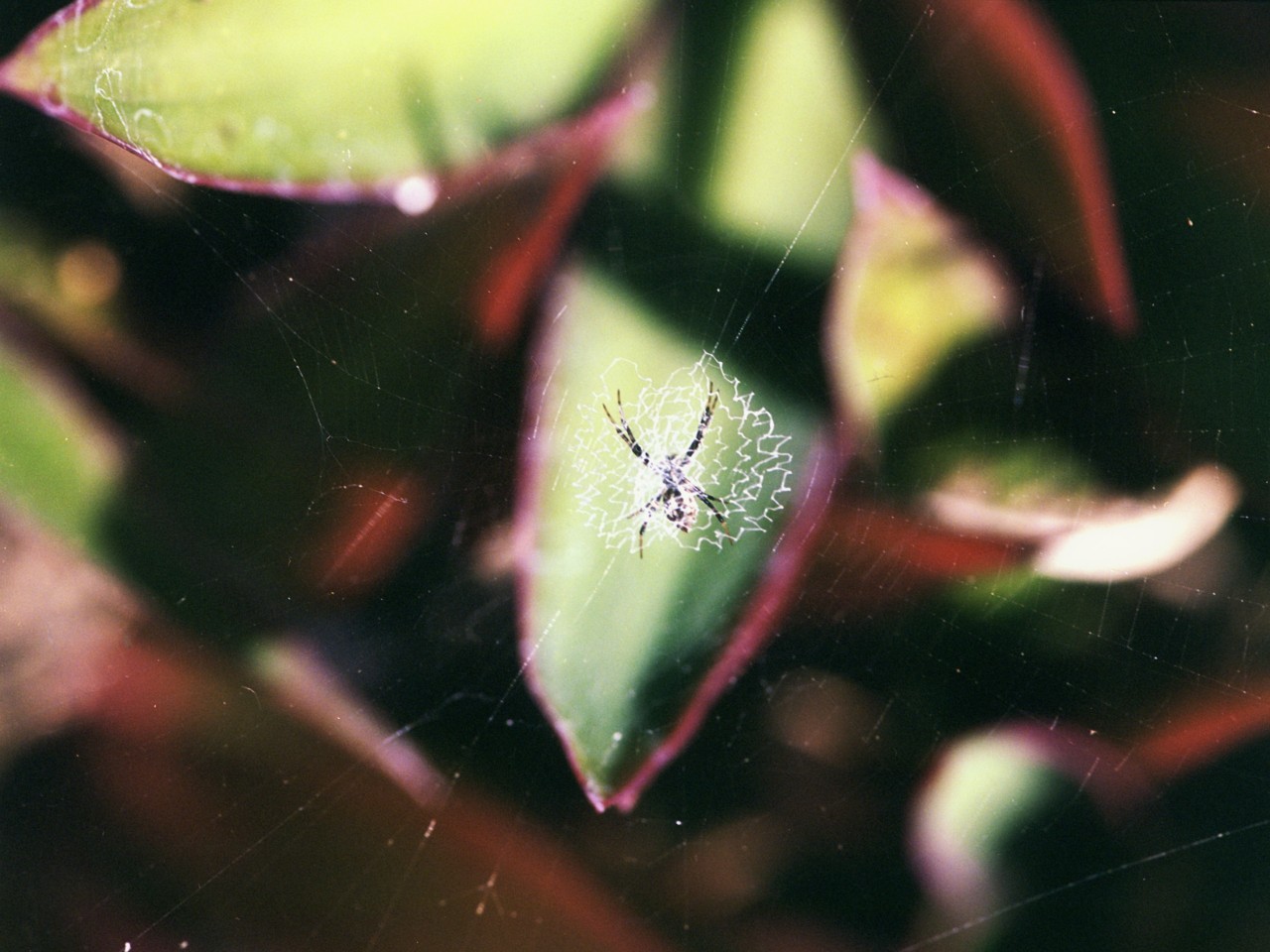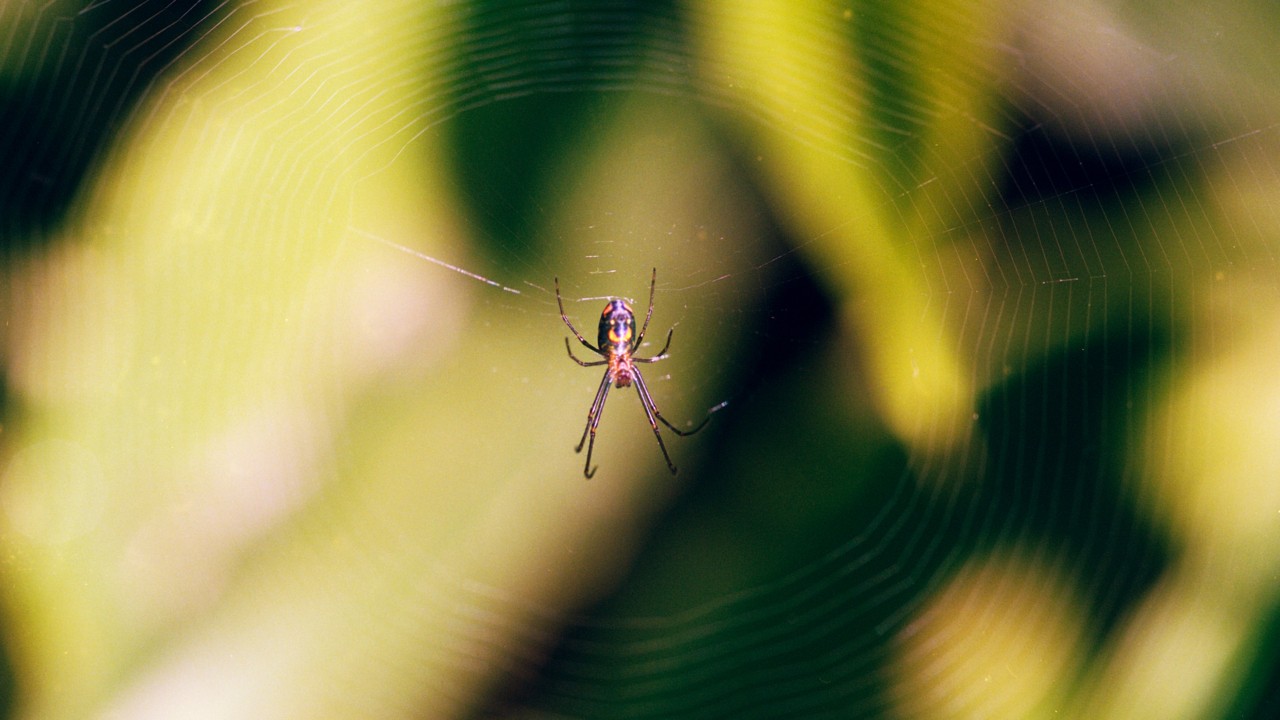
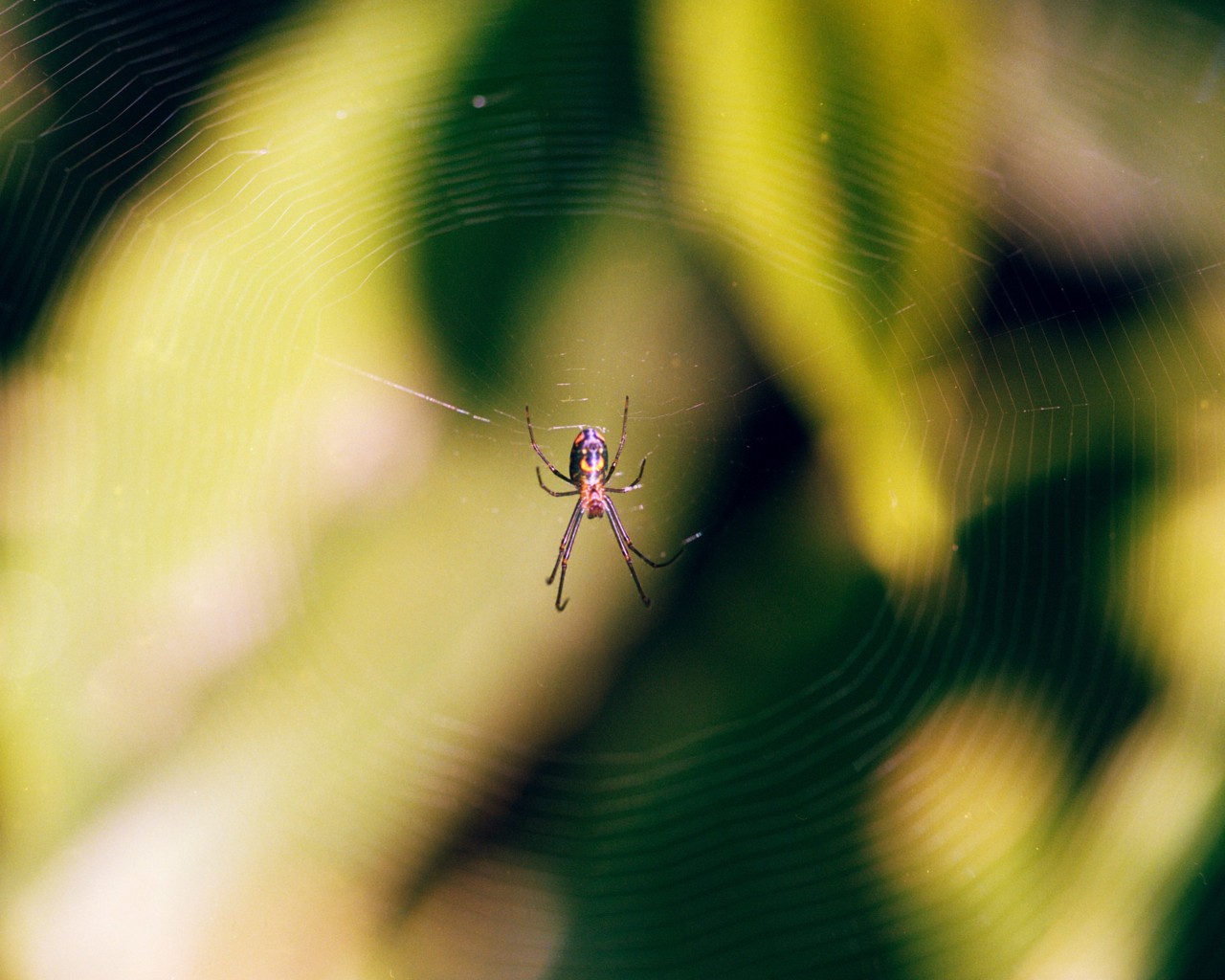
Words by Ruth H. Burns
Photographs by Jacques Brun
Are you afraid of spiders? If so, you’re not alone. Arachnophobia is one of the most common anxiety disorders in the world. And while I believe that the negative associations people have with spiders are overblown, being fearful of them isn’t entirely irrational. Spiders can be dangerous—they creep up on us without warning, and some species possess lethal venom.
Spiders fall under the class Arachnida, scientifically characterized as organisms having two body regions: an abdomen and a cephalothorax. They have four pairs of legs, two sets of appendages that serve as mouthparts, and eight eyes.
Though they may appear menacing and make a habit of lurking in dark corners, spiders benefit humans in a number of ways. Most prominently, they feed on cockroaches, mosquitoes that spread diseases like West Nile, malaria, and Zika, and on other insects that destroy crops. Spiders are also a vital food source for various species of bats, birds, lizards, and frogs. Like their more warmly received counterparts bees and butterflies, some spiders disperse pollen when they crawl from flower to flower. These eight-legged creatures have a place in modern Western medicine, too. Their venom has been instrumental in the development of medications used to treat high blood pressure and heart disease.
Like much of what humanity fears, spiders deserve our respect, rather than our horror or revulsion.
As an Indigenous woman, I have a peculiar understanding of spiders. I’m quite fond of them—I even have one tattooed on my body—but I revere them too much to ever attempt to keep one as a pet. From the perspective of my People, as well as Indigenous groups across the globe, the natural role of spiders in providing balance within ecosystems makes them the perfect aid to understand the duality of humanity.

The Spider plays a vital role in the history, spirituality, and folklore of many Indigenous Nations. A number of Native Nations in North America honor Spider Woman as a powerful deity.
To the Hopi people, Spider Grandmother is an Earth Goddess named Kokyangwuti. The Hopi believe that she assisted the Sun in creating all manner of life and that she molded human beings from clay and guided them to the surface of the planet. They teach that she still lives underground and may be called upon for advice or to provide medicine.
A legend from the Hopi Pueblo exemplifies how Spider Grandmother may be called upon for aid. When a Payupki village raced against a Tsikuvi village, she applied a special elixir to the runners’ legs to help them run faster, then burrowed into the ear of one of the runners to give her advice on how to better run the race. Spider Grandmother did this because some members of the Tsikuvi village had been disrespectful to her. The Keres Pueblo refer to Spider Woman as “Thought Woman” due to the power of her intellect.
The Zuni also tell stories about Spider Woman, believing she is a trans-dimensional guide for travel between worlds. They credit her with creating human beings, as well as gifting them with religious rites.

The Diné (Navajo) Nation refers to Spider Woman as Na’ashjé’íí Asdzáá. She taught them how to use sheep’s wool to make yarn and how to weave beautiful rugs. To this day, Na’ashjé’íí Asdzáá is said to inspire weavers with creativity and skill. The Navajo interpretation of Spider Woman asserts that she is neither good nor evil. While she can often be a positive force, the Navajo also teach that she enjoys snatching naughty children and devouring them on Spider Rock, which is bleached white from their bones being left out under the hot desert Sun.
Among the Indigenous peoples of West Africa, the spider is Anansi, a trickster god who made the Sun and the Moon, thereby creating day and night. Anansi isn’t bound to his spider form, but is a shapeshifter who can appear as a variety of different animals, and can even take human form.
The spider deity of my own people is Iktomi, the wise fool and reticent pedagogue. Among my people, the Oceti Sakowin (Dakota/Lakota/Nakota of the Great Sioux Nation), Iktomi is an ancient god who falls within the classical trickster archetype. Iktomi’s imprudence arises from his conceit. He’s shrewd—brilliant even—but often fails to rein in his conniving, avaricious, self-absorbed lesser nature.
Arachnids help maintain balance in ecosystems. In much the same way, Iktomi teaches us about balance, as well as the idea of wisdom coming from folly, or learning from your mistakes.
Zitkála-Šá (Red Bird), also known as Gertrude Simmons Bonnin, has written about Iktomi in a way that sheds some light on his disposition. This Yanktonai Dakota woman was born the same year as the Battle of Little Bighorn and was outrageously multi-talented. Besides being a suffragist who was influential in helping Native peoples, as well as all women, gain the right to vote, she was a successful writer of essays and short stories who also composed an opera. Her collection of Oceti Sakowin Dakota legends contains a number of fables that star Iktomi.


“Iktomi and the Ducks” is perhaps one of the most well-known. Some version of the story has been told to Dakota children since time immemorial. In this tale, Iktomi tricks a flock of juicy, plump ducks into dancing with their eyes closed. He sings to them while quietly snatching them up one by one and wringing their necks. Some of the ducks manage to escape, but by then, Iktomi has enough for a feast.
Once Iktomi begins roasting the ducks, he grows irritated by an old tree with loud, creaky branches and sets his sights on silencing the tree. But when he gets caught in the tree’s branches, a pack of hungry wolves devours all of his delicious ducks.
With the ducks eaten and his stomach still empty, Iktomi prays to Inyan (Grandfather Stone) for sustenance. He makes an offering of his warm blanket to Inyan in exchange for food, knowing in his heart that he intends to retrieve the blanket later.
Later on, Iktomi finds a freshly killed deer. He concludes that his discovery was an answer to his prayer and places the meat over a fire. As the Sun sets, however, Iktomi gets cold, so he sneaks back to Inyan and takes his blanket back. By the time the crafty spider gets back to his campfire, his venison has also been eaten.
Instead of achieving enlightenment by recognizing that he should not have offered a false, hollow sacrifice to Inyan, he regrets not having eaten the meat before reneging on his promise.

The natural role of spiders in providing balance within ecosystems makes them the perfect aid to understand the duality of humanity.
Ms. Bonnin made a conscious decision to release Iktomi’s story to the American public in 1901 because she hoped they would recognize that Iktomi’s follies often parallel settler transgressions against Indigenous peoples. The U.S. government used treaties and false promises to trick Native Nations out of their lands and resources. Fueled by never-ending greed, colonizers perpetrated genocide against Indigenous peoples. They were never satiated, forever perpetuating a cycle of unsustainability, and unwilling to learn from their mistakes, even to save themselves. That attitude has led to this current moment, in which we stand at the precipice of extinction.
Iktomi is a master of illusion, and some legends about him involve seeing past his deception to decipher the truth. While Iktomi is a wily trickster, he always provides us with a choice. Among my band of Sissetowan Dakota, there is a legend of Iktomi destroying an entire village by setting each person against another until there was no one left, at which time he appointed himself chief. Each person, when confronted with petty differences and lies, chose to fight their fellow man or woman, rather than confront the puppet master.
The story is simultaneously comedic and tragic. After all, what is Iktomi but a mirror to our dark half? He is in all of us. He is the duality of humankind.
As humanity heads into an uncertain future, we would do better to learn the lessons that Iktomi has so desperately tried to impress upon us, age after age. The key to our survival is hidden behind his many eyes.

This story first appeared in Atmos Volume 9: Kinship with the headline “Web of Lives.”
Web of Lives: Lessons From Spiders in Indigenous Cosmology
